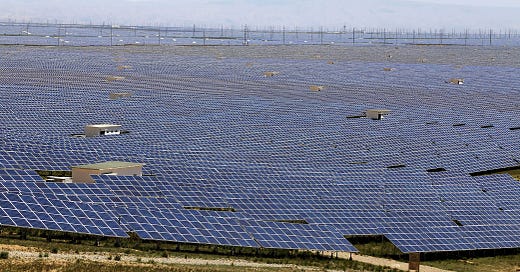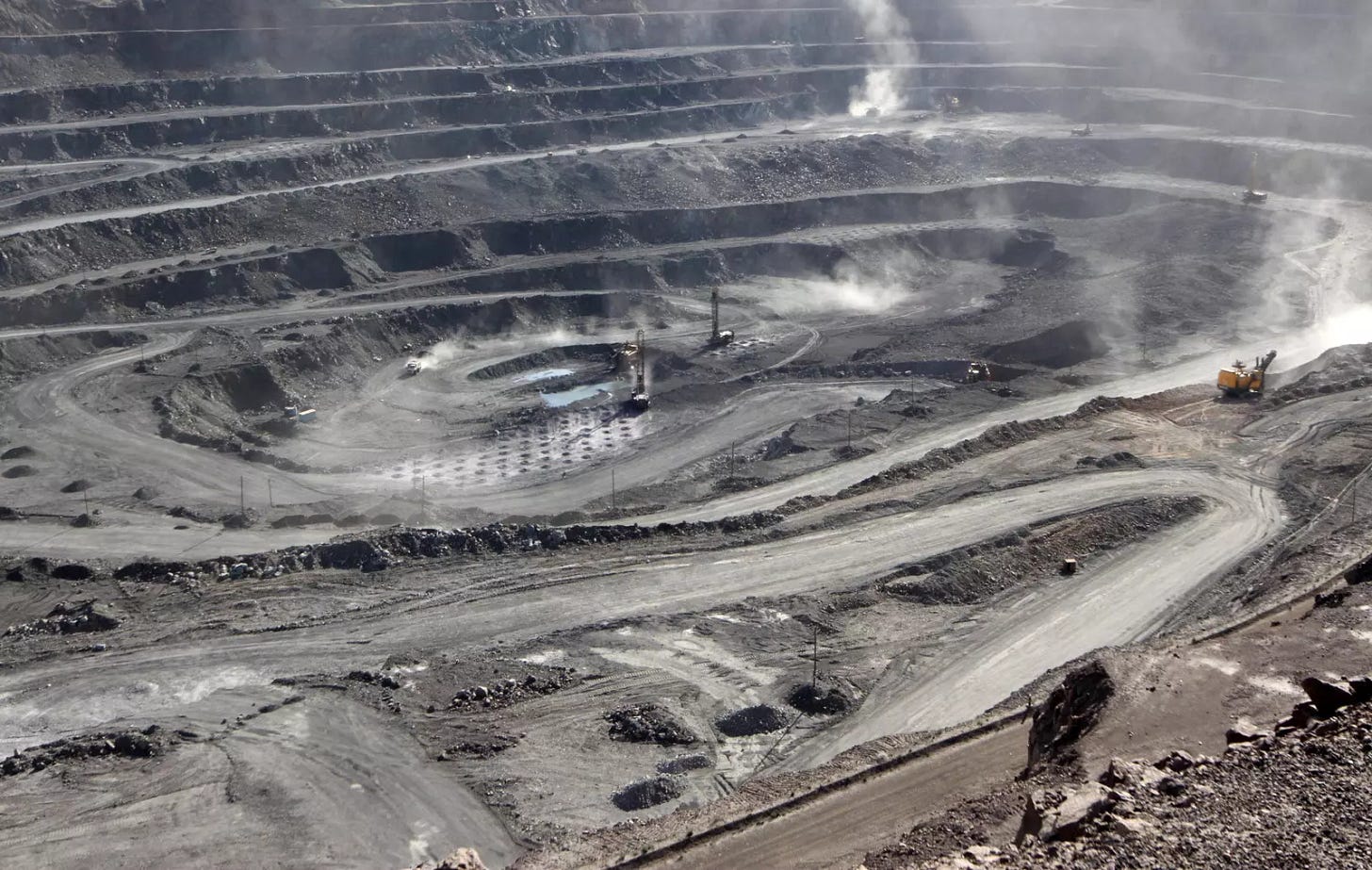The US Approach to China in the Climate Transition
The US innovation-to-scale gap and reliance on China for critical materials
Trump’s tariffs on Chinese clean tech will raise prices for key imports like lithium batteries and solar panels—80% of which come from China. This could weaken the EV transition for US automakers and strengthen Chinese EV companies. In response to the tariffs, China may retaliate by limiting access to critical materials essential for clean energy technologies.
The US Innovates, China Scales
In the clean energy transition, the US has focused on R&D for new technologies while China has focused on scaling fewer technologies at global scale. The US lags in manufacturing, particularly in critical material supply chains, which China dominates. To compete in the energy transition, the US has to bridge its innovation to deployment gap by learning from China and reducing dependence on Chinese supply chains.
Federal agencies like the DOE are legally prohibited from lobbying Congress for specific funding, so they rely on Congress to allocate funds first, often without being able to directly advocate for particular projects.
In the US, federal agencies like the Department of Energy (DOE) are legally prohibited from lobbying Congress for specific funding, so they rely on Congress to allocate funds first without being able to directly advocate for specific projects. The agencies therefore have to wait for Congress to provide them with funding and only then can the agencies pursue projects. Congress mainly cares about carry over, which is the amount of funding that is carried from the year of funding to the next, or the amount of money that was not spent. Therefore, the federal agencies have to create projects and spend the money as quickly as possible. For example, when the Inflation Reduction Act allocated $370B for clean energy in 2022, the DOE quickly revived the Loan Program Office and created grid modernization incentives despite operational and staffing constraints.
China, on the other hand, uses a subsidy-driven strategy. The government typically decides on an industry of interest and then heavily subsidizes it. Many companies fail and pocket the subsidies. China accepts a lot more waste than the US does, and China can because it keeps wages low, exports more than it consumes, and focuses on production. For example, China decided to focus on the solar, battery, and EV markets when these were unprofitable so that they could learn and bring down the cost curve, which the US was unwilling to do.
China’s advanced manufacturing capabilities allow them to learn by doing. Their dark factories—factories run by robots that are kept dark—allow China to increase efficiency and cut costs. In the US, series C investments are rare because commercial readiness expectations are high from the start, whereas in China, the government and investors often support companies through early losses and allow expectation to build over time.
The divergence between innovation versus scale is evident in the EV battery sector. The US developed early lithium-ion battery technologies with support from research programs like ARPA-E but many companies failed to scale due to lack of capital and demand. One example is A123 Systems, a US battery innovator that went bankrupt in 2012 before entering mass production and whose assets were acquired by a Chinese company that successfully scaled the technology. China prioritized battery manufacturing and now dominates over 75% of global lithium-ion battery production.
With the IRA, the US was trying to close the gap and offer incentives for domestic battery manufacturing. For example, in 2023, Ford built an EV battery factory in Marshall, Michigan using IRA funding, and it uses technology from CATL, a Chinese tech company. Some of CATL’s foundational technology was developed in the US, but China successfully scaled it. CATL now does tech transfer to Ford in the US, which reflects the trend where the US innovates, China scales, and increasingly, exports back to the US.
Geopolitical Risk Over Critical Materials
Similar to the geopolitical risk around who controls oil, with the rise of renewable energy, the geopolitical risk around critical materials needed for renewable energy has grown. Unlike oil, which is more geographically dispersed, critical materials are highly concentrated—China controls 75% of EV and solar panel supply chains and supplies over 70% of rare earth materials. China controls much of the land where raw minerals like lithium, cobalt, and graphite are mined, as well as the processing and manufacturing infrastructure needed to turn them into inputs for clean energy technologies.
While oil is directly consumed to power vehicles and industrial processes, critical materials are an input for renewable energy infrastructure. Therefore, the effects of a disruption to critical materials supply would be limited to certain industries and would be less severe than an oil embargo. Still, as renewable energy becomes more central to economic and national security, China’s dominance in this space poses a growing geopolitical risk. If the world meets climate targets, the demand for critical materials would increase sixfold by 2050, further intensifying vulnerability.
Since its invasion of Ukraine, Russia has used Europe’s reliance on its oil and gas as a weapon. China also has a history of weaponizing critical materials. For example, China stopped exporting rare earth materials to Japan in 2010 after a Chinese fishing boat was arrested off the Senkaku Islands, and a few weeks ago, China set export controls on gallium and germanium, two critical materials key for solar panels. As well as limiting exports, China could suddenly dump a large amount of critical materials on the market and negatively impact investors, which adds uncertainty to the critical materials market.
There is a trade-off between reducing the risk of relying on China and accelerating the climate transition. China produces the world’s cheapest solar panels and EVs, so avoiding Chinese supply chains often make clean technologies more expensive and harder to deploy at scale. For example, India is building domestic manufacturing capacity to reduce its reliance on China, but doing so has slowed its energy transition. In the US, this tension is also evident. When, in 2023, a bipartisan group in Congress passed tariffs on Chinese solar panels imported from Southeast Asia, Biden vetoed the measure to avoid raising solar costs and slowing deployment. The political divide also shapes the debate because Republicans typically prioritize competition with China and oppose climate action—not one voted for the Inflation Reduction Act.
De-Risking Solutions
To assess the security risk that China’s control has requires taking a mineral by mineral approach, including looking at how much of the critical materials China is exporting and how much is being used domestically. Rare earth materials are the most vulnerable critical materials for the US. Some say the US should produce everything it can domestically because the US has rich geological resources, but the US also has social and environmental issues around mining that would make this impossible. Therefore, the solution should involve derisking instead of decoupling from China.
After the 1973 oil embargo, a global cooperation effort resulted in the IEA, which provides transparency and enables a diversity of suppliers to reduce dependency on a single country. Amid a global protectionist trend today, we need a similar approach for critical materials, with more free-trade agreements to diversify critical materials suppliers and reduce vulnerabilities. Several US companies have started diversifying their operations away from China. For example, Apple is moving parts of its iPhone production from China to India, and Google is shifting to Vietnam for parts of its Pixel production.
The US could also develop mines in other resource-rich countries through loan guarantees, technical assistance, and government-led equity investments. This diversification would also promote growth in regions like Latin America and Africa. One way to merge climate interests and competition with China, especially among Republicans in the US, is to compete with China on climate action, especially in developing countries.
Another solution is to develop technologies that reduce the use of critical materials, that use alternative materials, and that recycle critical materials. The US should also stockpile critical materials to buffer against short-term disruptions and price shocks.
What’s next?
In order to build its own manufacturing leadership, the US has to learn from China’s manufacturing capabilities. In the 1990s, the US brought Japanese car companies to the US to learn from them. Similarly, China took US manufacturers to China and learned from them. Now, the US could bring Chinese factories to the US and learn from them through 50-50 joint ventures to build out the factory and supply chain expertise. There could be a trial period in a limited number of states for the US to test this strategy.
To build manufacturing leadership in clean energy, the US has to learn from China—the way it once learned from Japan. In the 1990s, Japanese automakers set up factories in the US and created joint ventures to transfer production knowledge. China used a similar strategy, bringing US manufacturers into the country to build domestic expertise through joint operations. Today, the US could apply this model and allow 50-50 joint ventures with Chinese clean energy firms to gain access to advanced manufacturing and supply chain expertise. A trial period in a limited number of states could allow the US to test this strategy.
China is often a bad actor, with issues including forced labor, ethnic cleansing, cyberattacks, and human rights abuses. For example, half of the world’s polysilicon, key for solar panels, is produced near Urumqi in the Xinjiang region, where over one million Uyghurs are detained. Journalists and auditors are not allowed into the factories, and Muslim minorities are forced to sign factory contracts under threat of internment. The Xinjiang region also has the cheapest energy, from coal, in China, which makes the polysilicon especially carbon-intensive. Therefore, it is a good idea for the US to rely less on China. The Trump administration attempted this through tariffs but imposing these tariffs alongside a group of countries, including Europe, Korea, Singapore, and the Philippines, would have presented a stronger position against China.
As the Trump administration sets tariffs, it has to also bolster the US economy by building out infrastructure. However, through its hostility toward universities, rollbacks on incentives for industries like renewable energy and EVs, and restrictions on immigration, the Trump administration is undermining the foundations of US innovation and slowing its long-term growth. These moves are especially harmful to US climate and energy leadership as China makes large-scale investments in next-generation technologies like fusion and rapidly electrifies its energy system—while US federal policy remains focused on maximizing fossil fuel production.
To maintain its global leadership, the US has to de-risk its supply chains, especially of critical materials, from China’s by creating more global partnerships and alliances and building out key clean energy industries domestically.







